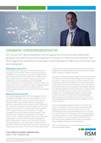As per 1 January 2017, the legislation regarding VAT refunds in case of bad debts has changed. The main purpose of the legislative amendment is the possibility to realize VAT refunds at an earlier stage and to simplify the procedure. In this newsletter, we will inform you about this change in legislation.
Legislation until 1 January 2017
Until 1 January 2017, the entitlement to a VAT refund arose when it became clear that an amount receivable was not paid and receipt of payment was no longer expected in the future. For example: in the situation of bankruptcy (confirmed by a curator) or upon receipt of a statement from the bailiff that stated that the outstanding debt would not be paid by the debtor. To claim the VAT refund, entrepreneurs were obliged to submit a specific refund request. This request had to be filed within one month after the period in which the entitlement to a VAT refund arose.
Legislation as of 1 January 2017
With the change in legislation, it has become easier to claim the VAT refund on bad debts. The amended legislation contains a legal fiction. Due to this fiction the entitlement to a VAT refund arises ultimately one year after the amount receivable was due by the debtor. Furthermore, as of 1 January 2017, no separate refund request is necessary. The VAT refund due to bad debts can be claimed by including the amount in the regular VAT return of the period in which the entitlement to the VAT refund arises. For amounts receivable that became due in 2016 or earlier, the one-year-period is deemed to have started on 1 January 2017. As a result, the entitlement to a VAT refund is January 2018. The VAT refund is therefore to be claimed in the first VAT return of 2018, that is unless off course the certainty that the bad debt will not be paid, is identified at an earlier stage.
The opposite effect applies to the non-paying customers that have deducted the VAT but not paid the amount due. They will have to repay the VAT at the latest one year after the date on which the payable amount became due. If the customer does pay the debt at a later moment, then the customer has the right to deduct the VAT once again. This refund and – if applicable – the deduction can also be processed in the regular VAT return. In addition to the recovery of VAT there is a specific transitional rule for the repayment of VAT by non-paying customers. The VAT on amounts that were due in 2015 (or earlier) which amounts have not been paid yet, becomes payable in January 2017. Hence, the VAT due has to be reported immediately in the first VAT return of 2017.
The new refund fiction also provides in a transfer of debts situation. The receiving entrepreneur will substitute the transferring entrepreneur for the transferred debts. The same entitlements as mentioned above will apply to the entrepreneur to which the debts are transferred: the entitlement to a VAT refund arises one year after the debt (or part of) becomes due and the obligation to pay the deducted VAT back arises also one year after the amount was due.
For further information, please contact your RSM Advisor.
Download 'Recovery of VAT on bad debts' in pdf.

